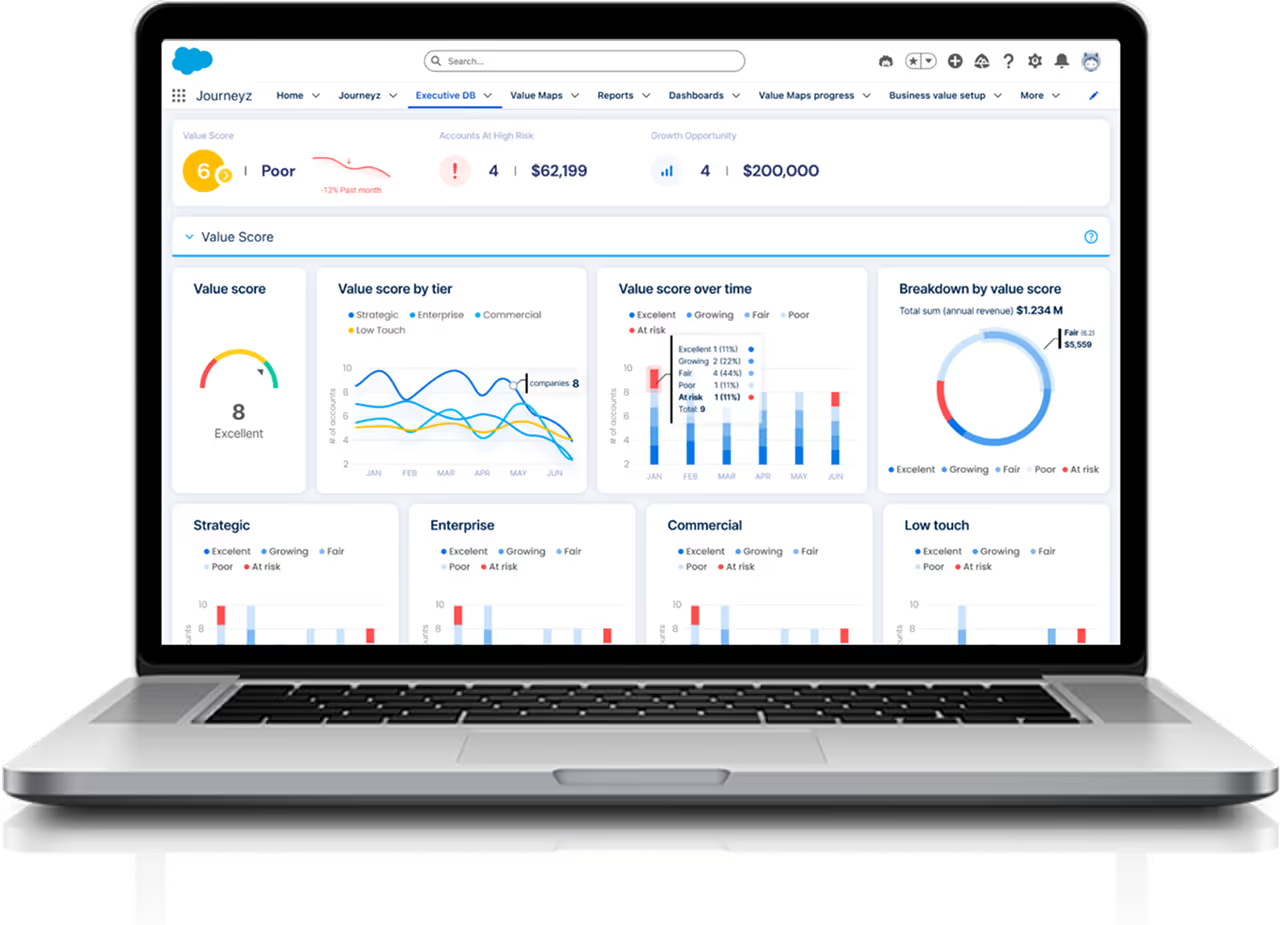How Fostering Multi-Layered Customer Relationships is the Secret to Success
I spent the first half of my career in data analytics and strategy, working with various vendors to interpret data and provide strategic recommendations. But it wasn’t until I partnered with Sisense, as a customer, that I experienced a shift in how I viewed relationships with vendors.


Sisense wasn’t just focused on product-led growth (PLG) or the tool’s feature functionality—they were invested in my personal success. They asked, How do we help James succeed in his role? How do we help him get promoted and advance in his career? That investment in my success was something I had never seen before, and it completely changed my approach. This experience pivoted my career into customer success and account management, because when you help people achieve their goals, the relationship becomes much more than transactional—it becomes a strategic partnership built on shared success.
Current State of Customer Success & Account Management
Many of today’s customer success tools focus on preventing churn by tracking surface-level activity, such as logins and usage. There are tools that emphasize predicted behavior and churn prevention, measuring customer engagement through these activity-based metrics. If you know that a customer is going to have a problem, you can attempt to fix it. While this approach can be helpful, it only captures part of the picture. Customer activity could increase due to frustration or lack of education, while decreased usage could mean the product simply works well. You can't truly dictate behavioral metrics without understanding what's driving them. What’s needed is a deeper understanding of the full scope of the relationship—the depth and breadth of how the tool is being leveraged across multiple touchpoints within an organization.
The Challenge with Single Champions Focus
Having only a single champion or buyer within a customer organization presents significant risk. While having one person who advocates for your product is valuable, it’s usually not enough to drive long-term success. If you’re not engaging with multiple stakeholders across different departments—whether it’s the CMO, CFO, or other key roles—you risk stagnation, even if the individual relationship is strong. You must map out the entire relationship strategy: from understanding who your champion is and how their influence extends across the organization. How does their role impact marketing? What about operations? Real success in account management comes from multi-touch engagement across various personas, instead of relying on one person to carry the weight of the relationship.
The Need for a Multi-Layered Relationship Strategy
I’m a strong believer that a multi-layered relationship strategy can make all the difference—especially, in my experience, when vendor-partners have helped me tap into my influence across C-level relationships. It's like playing 3D chess, where you factor in the motivations of each persona and how they relate to other stakeholders. For example, the CFO’s perceived value of the product will differ from that of the IT or marketing teams, and addressing those unique needs is key for long-term success. When you map out the full picture—not just focusing on surface-level metrics—you build stronger, stickier relationships.
This multi-layered approach helped me transform our reactive customer success team, which focused on triage renewals and didn’t have much momentum, into a proactive, growth-oriented one. Twelve months after changing our approach, we increased net revenue retention (NRR) by focusing on these deeper, cross-functional connections rather than just usage stats.
How to Foster a Multi-Layered Relationship Strategy
A multi-layered relationship strategy requires a more proactive approach than just maintaining relationships with the implementation team. It starts with journey mapping—understanding who we have relationships with today, what the current use case is, and the measurable impact we’re delivering. Too often, the focus is on initial entry points like cost or time savings, but the key is to consistently ask: Are we improving? Have we moved from having a single champion to developing multiple advocates? Have we expanded to multiple use cases across different departments? And are we improving fast enough compared to others in the same vertical?
In practice, we realized that only engaging with the implementation team left us with a flat, stagnant relationship. If a new use case popped up, it was because of a decision outside of the control of our economic buyer, leaving us at the whim of not knowing until we knew. The first step I took was to step outside that circle and identify who was actually using the product and feeling its impact. For example, our product, which focuses on enterprise SEO for websites, was supported by IT but ultimately served Marketing’s goals—things like traffic metrics, abandonment rates, and content optimization. If we only spoke to IT, we’d miss the bigger picture. It became crucial to engage with the marketers who were benefiting from the data, as well as other key stakeholders, to fully understand the product’s value from every angle.
We dedicated resources on the customer success team with specialized expertise in verticals like higher education and healthcare. These teams launched account-based marketing plans that share knowledge and success stories from other companies in the same industry. These collaborative initiatives—like inviting teams to vertical-specific webinars focused on key topics such as marketing attribution—were highly successful. By shifting focus to those end-users and decision-makers, we were able to build stronger relationships that weren’t at the mercy of external decisions. This multi-layered engagement opened the possibility of additional use cases and ensured we were creating value across the entire organization.
Examples of Multi-Layered Relationship Building
An example of the power of multi-layered relationship building comes from our experience with a Fortune 500 customer. After five years of steady but modest 10-20% growth, we sensed a shift in priorities despite ongoing engagement with our champion.
Upon further investigation, we realized the issue wasn’t our champion, but their implementation partner, who wasn’t prioritizing our project because it represented only 5% of their overall scope..
Instead of leapfrogging over our champion, we collaborated with him, offering guidance to address the partner’s competing priorities. By engaging directly with the implementation partner, we helped address their concerns, making our project a priority.
This led to exponential growth—revenue multiplied 5 to 8 times over. This experience highlighted the critical importance of building relationships across multiple layers within an organization.
The Future of Customer Success & Account Management
As AI takes on more manual processes—like relationship mapping and activity tracking—customer success teams will be free to focus on more strategic, high-value interactions with their accounts. They will be able to take the time required to build more personalized, value-based relationships with their champions (and beyond) and find the deeper insights that can help their customers achieve greater levels of success.
The benefits of multi-layered customer touchpoints are not reserved only for large enterprises. This process can be simplified at the SMB and commercial level, because it's still driven by the same challenges. They have less resources, so they need to do more with less. Help them reach their goals, and it’s a win-win all around.
Ready to Start your Journeyz?
Transform your customer retention and expansion strategies with the industry’s first Customer Value Platform.

.svg)


.svg)
.webp)




